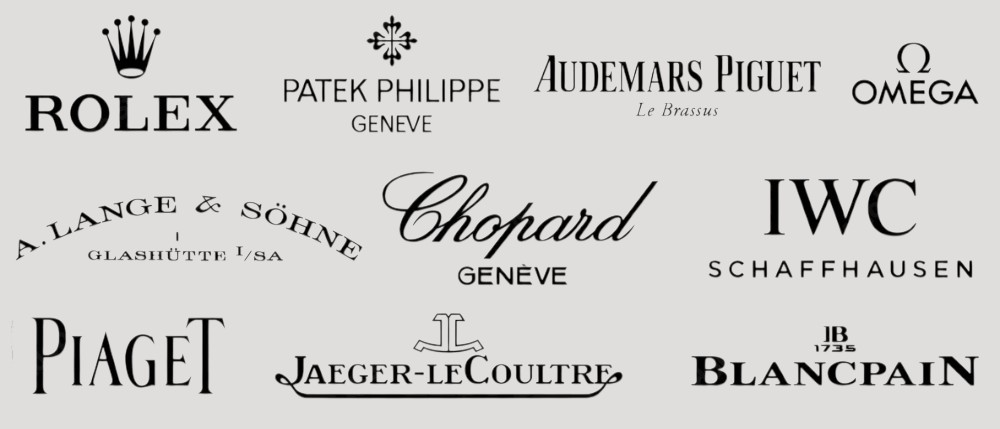
The Evolution of Watch Brands: From Toolmakers to Global Icons
Share
The history of watchmaking is a journey through invention, style, and human fascination with time. From the first portable timekeepers to today’s high-tech marvels, watch brands have evolved from small workshops to powerful names known around the world.
Origins: 16th–18th Century – The Birth of Timekeeping
The earliest portable watches emerged in the 1500s as luxury objects for royalty and the elite. These pieces were handcrafted, with no real “brands” as we know them today, but several key houses trace their roots to this era of experimentation:
Breguet (1775) – Founded by Abraham-Louis Breguet in Paris, pioneering the tourbillon (1801) and numerous technical innovations.
Vacheron Constantin (1755) – Established in Geneva, one of the world’s oldest continuously operating watchmakers.
Blancpain (1735) – Founded in Villeret, Switzerland, considered the oldest registered watch brand.
These early maisons combined artistry and science, creating watches that were as much jewelry as instruments.
The Industrial Revolution & the Rise of Brands (19th Century)
The 1800s brought industrialization, enabling mass production and the birth of recognizable brand identities.
Longines (1832) – Saint-Imier, Switzerland; known for precision timing and early chronographs.
Jaeger-LeCoultre (1833) – Le Sentier, Switzerland; famed for movement innovation and the iconic Reverso (1931).
Patek Philippe (1839) – Geneva; creator of perpetual calendars, minute repeaters, and highly collectible complications.
A. Lange & Söhne (1845), established in Glashütte, Germany, became renowned for its precision pocket watches, was nationalized after WWII, and triumphantly revived in 1994 with exceptional Saxon craftsmanship and icons like the Lange 1 and its signature outsize date.
Ulysse Nardin (1846) – Le Locle; specialist in marine chronometers.
Omega (1848) – La Chaux-de-Fonds; later famous for the Speedmaster “Moonwatch.”
Heuer(1860) is renowned for its pioneering chronographs and precision timing instruments, laying the groundwork for today’s TAG Heuer sports watches.
Chopard (1860), founded in Sonvilier, Switzerland, began as a maker of precise pocket watches, later becoming synonymous with refined jewelry timepieces and modern icons like the Happy Diamonds and Mille Miglia collections.
IWC Schaffhausen (1868) – Founded by Florentine Ariosto Jones, merging Swiss craftsmanship with American industrial methods.
Zenith (1865) – Le Locle; celebrated for the high-frequency El Primero chronograph
Piaget (1874), founded in La Côte-aux-Fées, built its reputation on crafting ultra-thin movements and elegant dress watches, becoming a pioneer of refined jewelry timepieces and record-breaking slim calibers.
Audemars Piguet (1875), founded in Le Brassus, secured its place in watchmaking history with its mastery of high complications and the groundbreaking Royal Oak (1972), the first true luxury sports watch in stainless steel.
These brands laid the foundation of modern watchmaking, combining accuracy with recognizable signatures.
Early 20th Century – Tool Watches & Professional Needs
The World Wars and rapid industrialization created a demand for rugged, functional watches.
Rolex (1905) – Founded in London by Hans Wilsdorf and Alfred Davis; introduced the first waterproof Oyster case (1926).
Tudor (1926) – Created by Rolex as a more affordable sister brand.
Panerai (1860 / watches for military in 1930s) – Originally a Florentine instrument supplier, became famous for Italian Navy dive watches.
Cartier (1847) – Parisian jeweler who revolutionized wristwatches with the Santos (1904).
Hamilton (1892) – American brand producing accurate field watches for the U.S. military.
Seiko (1881 / first wristwatch 1913) – Japanese pioneer of mass-market precision and later quartz technology.
During this period, watches were tools for soldiers, pilots, and explorers, pushing brands to focus on waterproofing, shock resistance, and legibility.
Mid-Century Golden Age – Icons Are Born (1940s–1960s)
Post-war prosperity allowed brands to experiment and create now-legendary models:
Omega Speedmaster (1957) – Chosen by NASA, it became the first watch worn on the Moon (1969).
Rolex Submariner (1953) – Defined the modern dive watch.
Blancpain Fifty Fathoms (1953) – Another diving pioneer, adopted by military forces.
Jaeger-LeCoultre Memovox (1950) – Alarm complication for travelers.
Breitling Navitimer (1952) – Essential for pilots with its slide rule bezel.
This era cemented the idea of watches as professional instruments and status symbols.
The Quartz Revolution (1969–1980s)
Technology disrupted tradition when Seiko (1969) introduced the Astron, the first quartz wristwatch.
Swiss brands struggled as quartz watches were cheaper and more accurate.
Swatch (1983) emerged as a savior of the Swiss industry, offering fun, affordable quartz watches that reignited interest in Swiss design.
Casio (1974) launched digital watches, calculators, and the rugged G-Shock (1983).
Many historic brands nearly disappeared, but those focusing on mechanical luxury—Rolex, Patek Philippe, Audemars Piguet (founded 1875) with its Royal Oak (1972)—survived by emphasizing craftsmanship over mass-market accuracy.
The Luxury Renaissance (1980s–2000s)
As quartz became commonplace, mechanical watches evolved into luxury art objects.
Franck Muller (1991) introduced bold designs and complex complications.
Richard Mille (2001) fused avant-garde materials with high-tech engineering.
Independent makers like F.P. Journe (1999) and Philippe Dufour elevated haute horlogerie with limited, handcrafted masterpieces.
Collectors began valuing heritage, rarity, and mechanical beauty over mere accuracy.
Today & Tomorrow – Innovation Meets Tradition (2010s–Present)
The 21st century sees a balance of technology and tradition.
Apple (2015) disrupted the market with the Apple Watch, redefining “wristwear” for a digital era.
Heritage brands like Rolex, Omega, and Patek Philippe thrive with iconic mechanical models while experimenting with materials like ceramic and carbon.
Eco-conscious makers such as Oris and Panerai focus on sustainable production.
Microbrands (e.g., Baltic, Christopher Ward) cater to enthusiasts seeking quality at accessible prices.
From the artisanal workshops of the 18th century to today’s coexistence of smartwatches and high horology, the evolution of watch brands reflects both technological progress and enduring human fascination with time. Each name—whether Breguet (1775), Rolex (1905), or Apple (2015)—marks a chapter in a story where innovation and tradition continue to tick in harmony.
